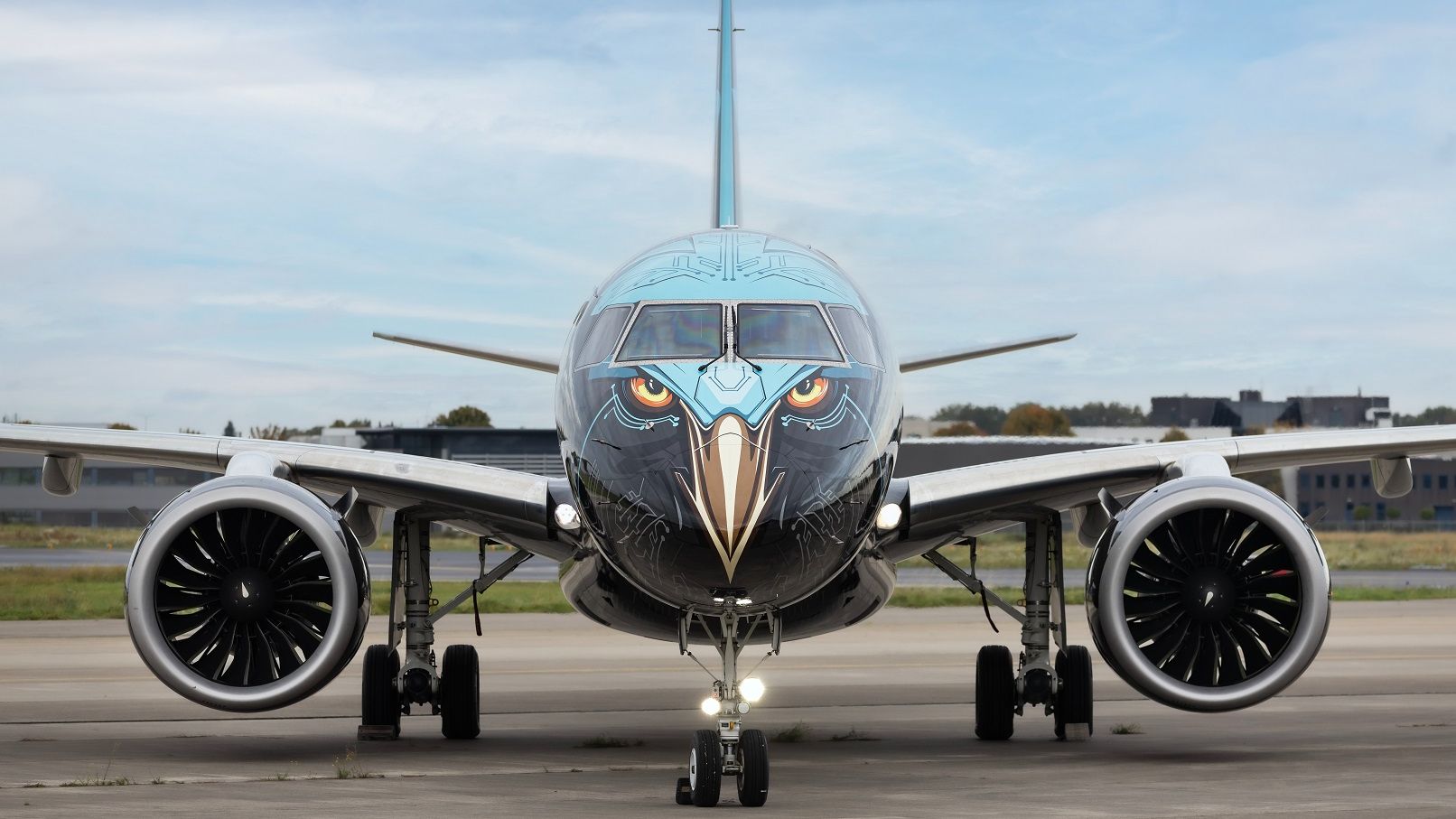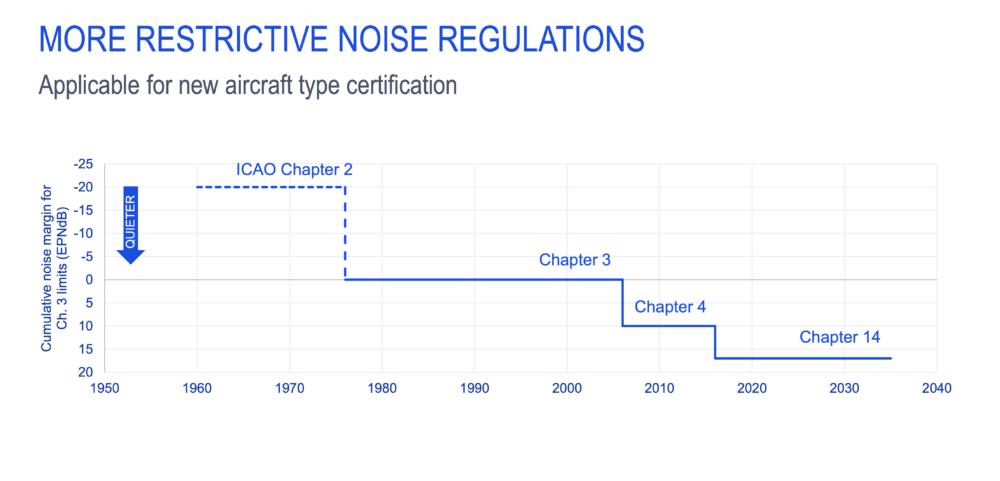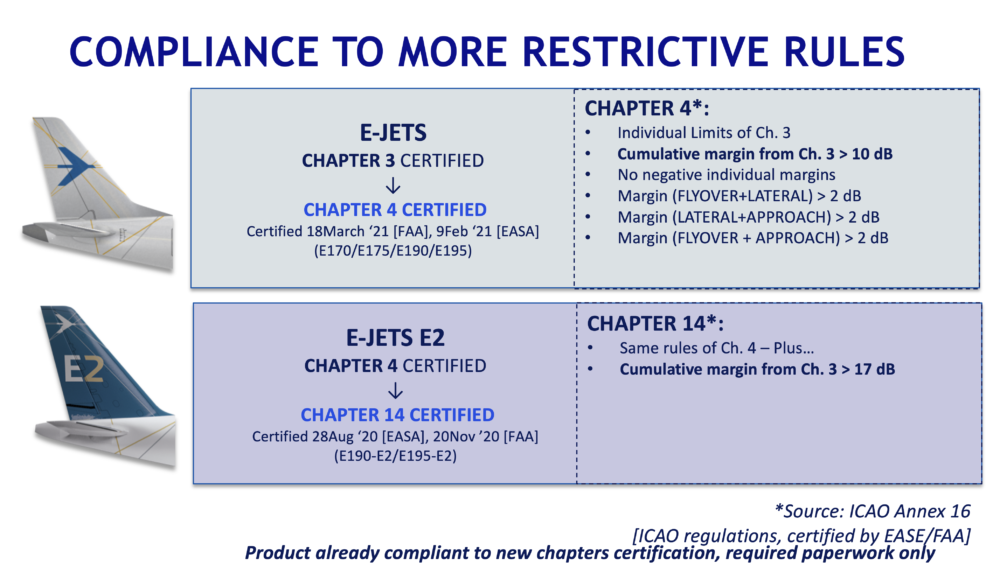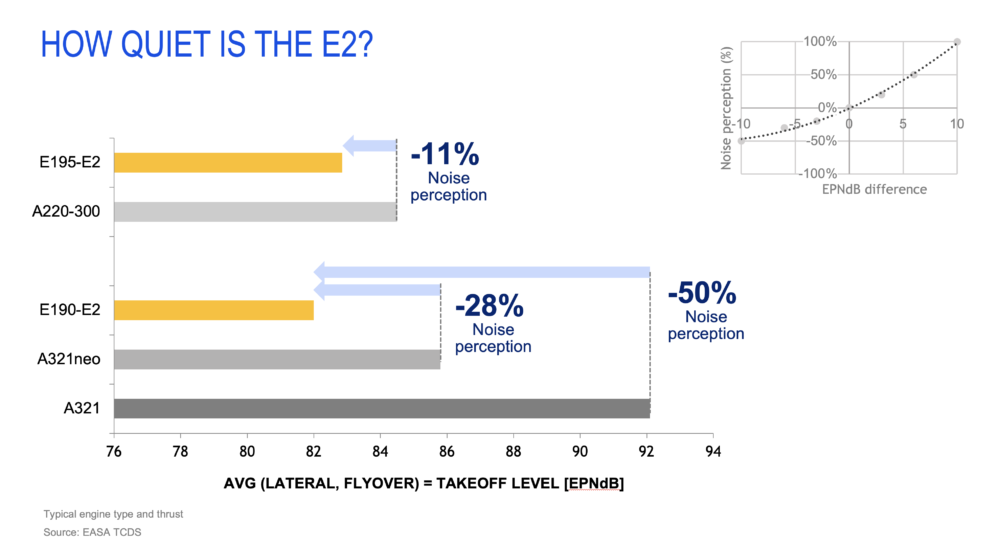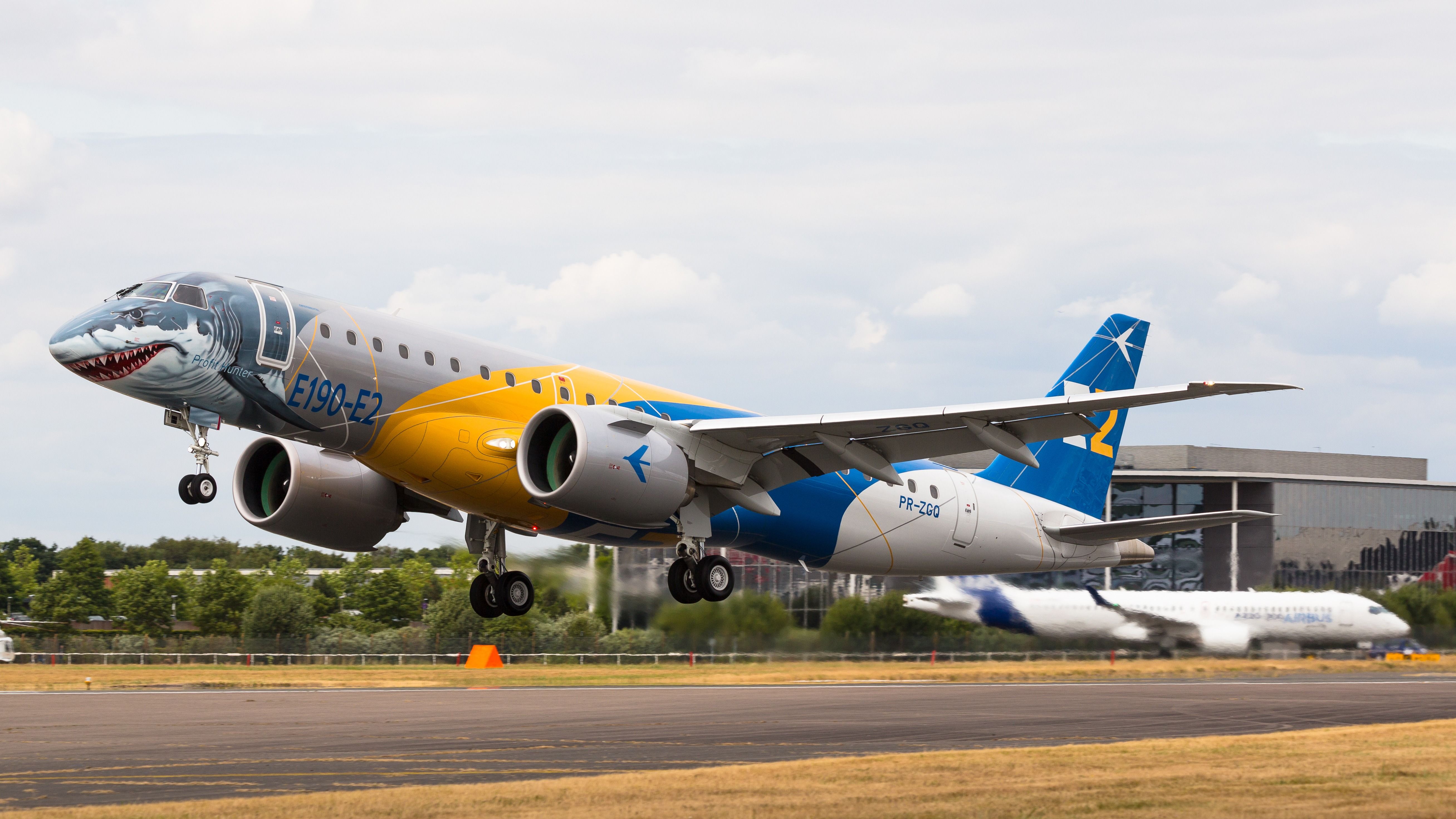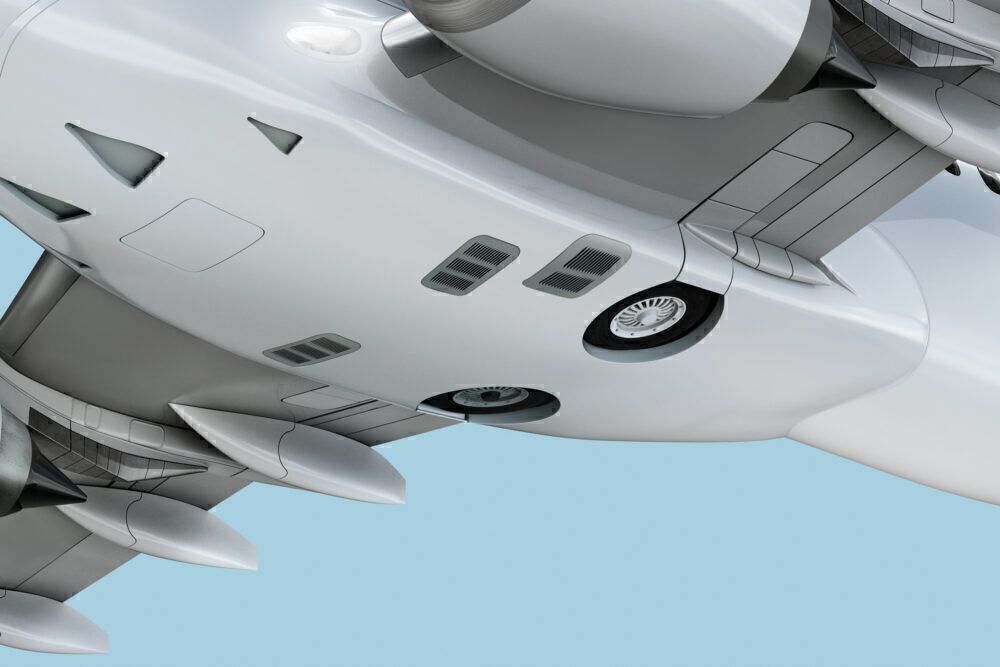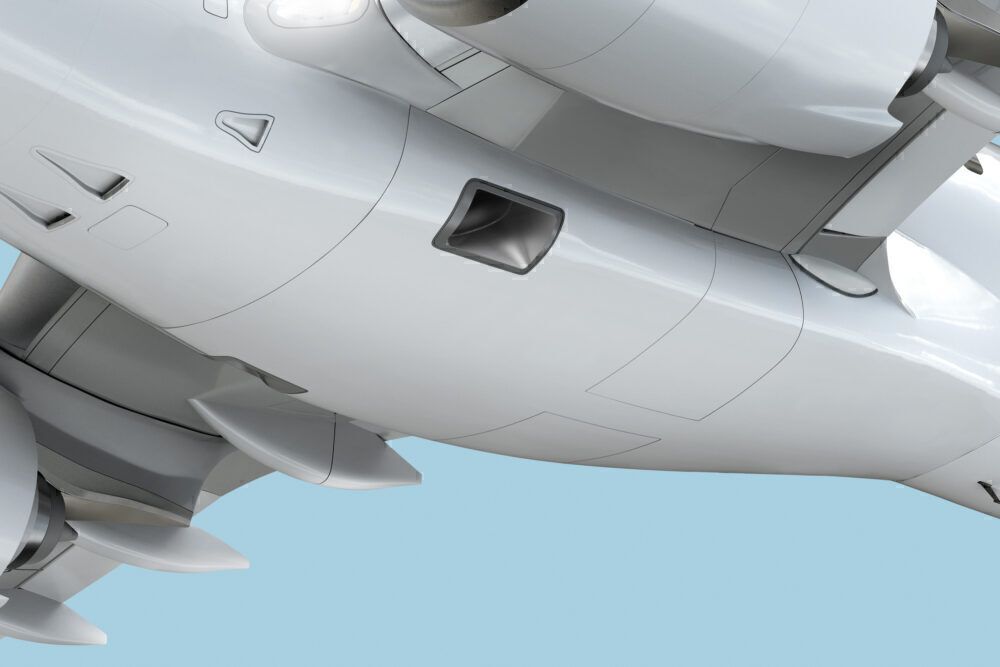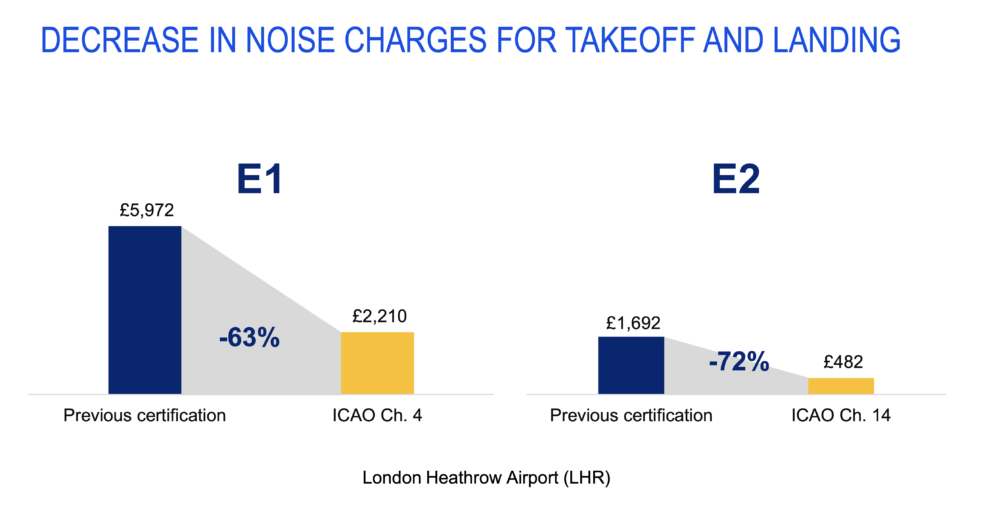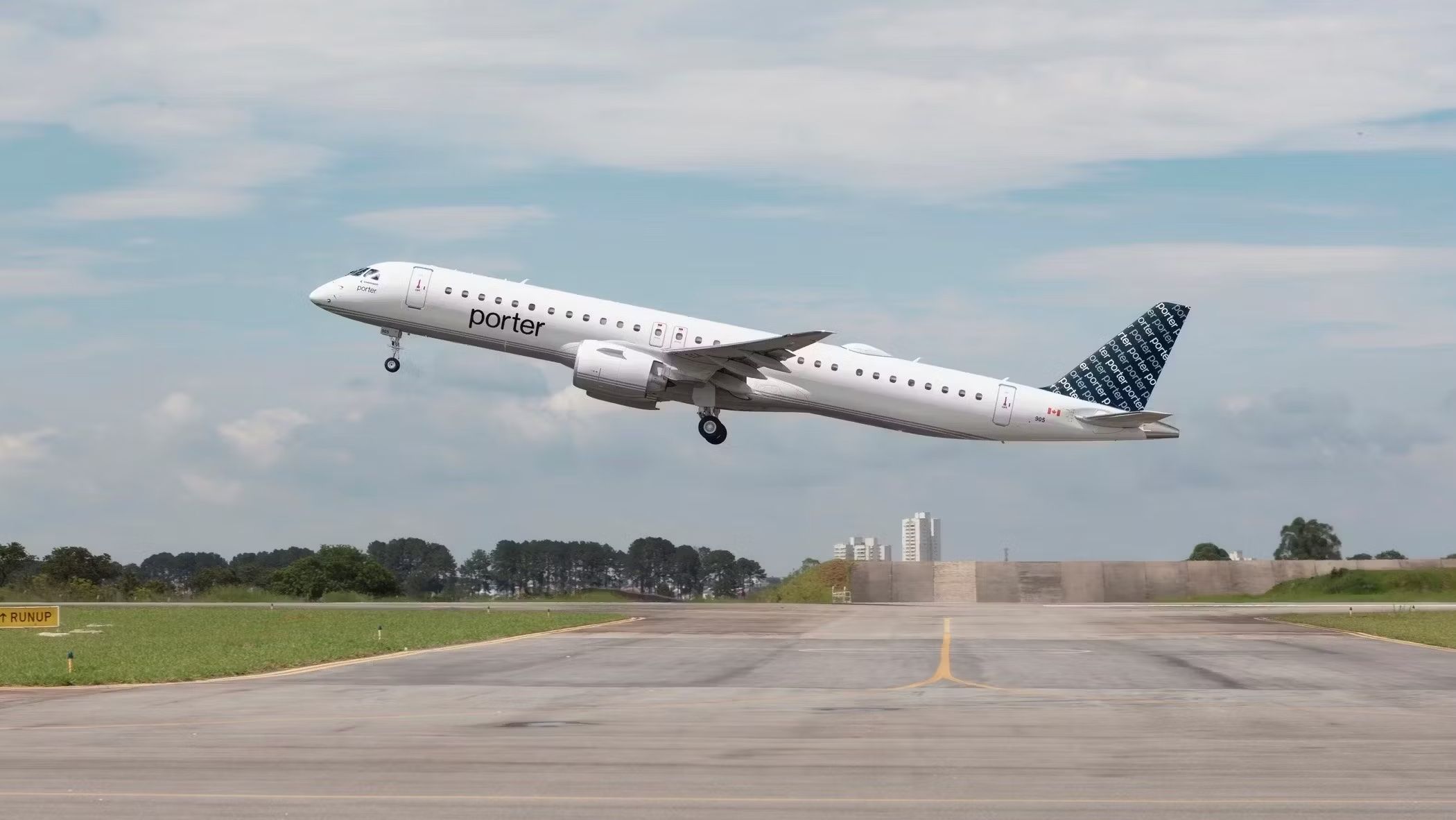Summary
- The Embraer E2 family, with its fuel-efficient engines and updated features, is now officially the quietest single aisle jet in the world, meeting the strict noise regulations of Chapter 14 without any modifications.
- Compared to its competitors, the E2 outperforms in noise reduction, such as being 11% quieter than the Airbus A220-300 and 28% quieter than the A321neo.
- The benefits of a quiet aircraft extend beyond passenger comfort, as it also improves fuel efficiency and reduces operational expenses for airlines, including lower taxes and greater flexibility in airport options.
The Embraer E2 family is a derivative of the original E-Jet family produced by the Brazilian manufacturer. The successor family features many improvements over the previous design. With the adoption of the more fuel-efficient Pratt & Whitney PW1900G turbofan engines, the aircraft provides a 17.5% increase in fuel efficiency over its predecessor.
The aircraft also features an updated cabin, newer avionics, and fly-by-wire controls. The E2 is proving to be a gamechanger in another important department, the noise footprint. It is the quietest narrowbody jet on the market. The first of the three variants (E175-E2, E190-E2, and E195-E2) entered commercial service in 2018. The manufacturer has produced and delivered more than 80 E2 aircraft since then. As of May, Embraer has 270 firm orders for the type.
The quietest single aisle aircraft in the world
The development of the Embraer E2 has come with some notable upgrades. The all-new wing, the bigger, more efficient engines, the lower fuel burn, all excellent developments. But Embraer has quietly achieved something even more special with this regional jet aircraft – it is now, officially, the quietest single aisle jet in the world.
Noise regulations, as certified by regulators such as EASA and the FAA, are released in Chapters. In the 1960s, Chapter 2 was in force, which was tightened up to Chapter 3 in the late 1970s and required a reduction of some 20 EPNdB (effective perceived noise in decibels). In 2008, Chapter 4 was brought in, which demanded noise levels to be lowered by 10 EPNdB over Chapter 3.
Photo: Embraer
The Embraer E2 was always compliant with Chapter 4 regulations. But, when Chapter 14, the current standard for new aircraft, was introduced, it required a further reduction of 7 EPNdB. In August and October 2020, the E2 was certified as compliant with the new Chapter 14 regulations by EASA and the FAA, respectively.
No changes were required to the E2 in order to achieve this compliance. So conscientious and detailed was the design of this aircraft, it met the standards for compliance right away. Certification was nothing more than a paper exercise, because the plane had been future-proofed from the outset.
Photo: Embraer
Embraer has always strived to future-proof its products. Indeed, when the original E-Jet was designed, its noise footprint went above and beyond the requirements of ‘Chapter 3’ standards which were in place at the time. The E-Jet, despite being certified during Chapter 3 times, has now been recertified as compliant under Chapter 4 requirements, with no physical changes necessary.
Stay informed: Sign up for our daily and weekly aviation news digests.
Just how quiet is it?
In comparison to other narrowbodies on the market, the Embraer E2 successfully outclasses them all. Its close competitor, the Airbus A220-300, is 11% nosier when measured in EMPdB than the E195-E2.
Other examples see it competing well with other new technology aircraft, and remarkably outshining older planes. The E190-E2, for example, measures 28% lower noise perception than the A321neo, and a staggering 50% less noise than the original A321ceo.
Photo: Embraer
Noise pollution is one of the biggest causes of community complaints about aviation. As airports have grown and expanded, local residents have become more affected by noise. As such, organizations like ICAO make the limitation of aircraft noise a high priority.
The E2 is so quiet, passengers onboard Widerøe’s E190-E2 requested cabin crew keep their voices down, as their conversations could be heard throughout the cabin. Aviadev’s Jon Howell recorded a podcast onboard the E2 ‘Techlion’ while flying over Africa – something that would be a struggle on most narrowbody aircraft.
Photo: Kurt Trattner | Shutterstock
What’s so great about a quiet aircraft?
While there are clearly some advantages to both passengers onboard and people on the ground to having a quieter aircraft, what’s so good about it from an airline’s point of view? Well, there are some key benefits to be had, not least in terms of fuel efficiency.
Luís Carlos Affonso is in charge of Engineering and Technology Development for all Embraer Business Units as well as in charge of Corporate Strategy. Speaking exclusively to Simple Flying, he explained very clearly why operating a quiet plane is a good thing. He said,
“Noise is energy. If you’re making a noise, you’re wasting energy. A quiet plane is an efficient plane.”
It’s something that we all can understand, but perhaps never realized before. When Embraer was seeking to make the E2 quieter, much of the work it undertook also made the plane more fuel-efficient. For example, noise from the wheel well was eliminated by adding a bespoke cover. This improved the aerodynamics of the plane, and therefore helped it burn less fuel too.
Photo: Embraer
Photo: Embraer
But it’s not only fuel burn that reduces the expense of operations. Airlines can actually end up paying less tax by flying a quieter aircraft into airports. As an example, at London Heathrow, the ‘noise charges’ levied by the airport were reduced from £1,692 ($2,339) to £484 ($669) for the E2 when it moved from Chapter 4 to Chapter 14 certification. That’s a reduction of 72%.
Photo: Embraer
Quieter aircraft also give airlines more flexibility in terms of which airports they can fly to. City center airports are convenient for passengers, but often have very restrictive noise control to avoid disturbance to the local population. London City is a prime example of this, which brought in an Aircraft Noise Categorization Scheme (ANCS) in 2018 to limit the aircraft that fly there.
It goes without saying that the E2 (and the original E-Jet) remain compliant under London City’s ANCS. Anyone who has flown in or out of the airport will see the apron full of Embraers, with its low noise and steep approach certification assuring its place at the airport.
Photo: Embraer
At the point of development, the E2 targeted a noise reduction of 14 – 15 EPNdB over the original E-Jet. It actually achieved a reduction of 19 – 20 EPNdB. This overachieving of standards is a mark of a great manufacturer, and a reason for Embraer to be proud. The company remains positive that, as new regulations come in to control noise and pollution, E2 will continue to be compliant for many years to come.
What are your thoughts on the outstanding features of the Embraer E2 family aircraft? Have you traveled on one recently? Share your experience in the comments section.

